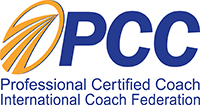Meetings.
The building blocks of many a modern life.
One after another, our days take place through these things we call meetings.
We sigh. Not another meeting.
Drained, bored, frustrated, we seem to be allergic to a primary method of working life. Especially in times of quarantine and Zoom calls, meetings can drag us down more than they bring us up.
Must it be this way?
What does it mean to meet?
How do you meet?
When I meet, I come together with.
To meet is to face. It’s a facing up to.
It’s two or more fronts coming together, creating a space and a rhythm that emerges in the dance between the two.
Two becomes not two.
To meet is to come face-to-face — often literally, always metaphorically.
A typical meeting appears to be two people coming together.
But a deeper look yields a different picture.
More often than not, it is our ideas that are meeting. We come together analytically. We meet intellectually.
Do we ever meet the whole person we’re facing?
How often do we confront the underlying fears and unspoken dreams in the room?
When do we take the time, the space, the breath, to look into the book of life that sits in front of us?
Do we ever fully meet in our meetings?
Perhaps meeting isn’t a noun.
It’s more of a spectrum. In every interaction, we can be living in a higher or lower degree of “meeting.”
We’ll call this the spectrum of meeting.
“Low meeting” is when you’re closed. You speak with detachment. You keep things on the surface. You’re open enough to have a conversation, but many parts of you are closed. You talk from head to head.
“High meeting” is when you’re fully open. You don’t shy away. You’re willing to confront and explore all that is happening. You bring awareness to what is there but is not being said, both the prevailing discomforts and the moments of joy. You have an intention for the meeting, yet no matter the outcome you dance in the inherent, intrinsic value of connection that is on offer. You meet—fully, intimately, nakedly.
We don’t need to be in full-on “high meeting” all of the time. There is an appropriate time and place for everything.
But we have come to assume that “low meeting” is normal and right. Not only in business meetings but in all of life, we live in an ocean of “low meeting.”
We have settled for what Marilynne Robinson calls “the poor, imperfect, deeply welcome comforts of evasion and concealment.”
“High meeting” is taboo. It’s reserved for psychologist’s couches, team-building retreats, and spiritual workshops.
We rarely enact “high meeting” in our daily lives.
This is how it has been.
But this is not how it must be.
What if we raised our average point on the spectrum of meeting?
A meeting is two mirrors facing each other. It’s endless.
You look into the mirror, and you see yourself looking at yourself, looking at yourself looking at yourself, looking at yourself looking at yourself looking at yourself … ad infinitum.
A meeting always holds within it infinite depth — into the abyss of you and the other.
It’s a portal to the seductive mysteries on the inside of things. Whether by fully meeting the wave as a surfer, or by fully meeting the other person during a business meeting, it’s a process of getting closer to encountering the veiled mysteries of life.
As you approach the wave, you get seduced in the fullness of it, losing yourself completely yet trusting absolutely in the rhythm and the dance that unfolds. You meet so fully that you become absorbed in the wave, with the wave. You and the wave align.
You don’t resist the wave. You don’t fight against it. Instead, you grapple with it. You say OK to its existence, and then you respond in kind.
It’s endlessly elusive. You sense there are bottomless depths available, calling you forward from just beyond, luring you out into more intimacy, more closeness, more facing up to.
The depths of now never cease calling you out.
“In reality we know nothing; for truth is in the depths,” Democritus said. “It will be clear that to really know what each thing is like is beyond our power.”
A meeting is a portal to tasting the eternal, unknowable depths of now.
When we fully meet, are we actually meeting the other?
Or are we really meeting ourselves?
Who is really meeting whom?
Meetings can be meetings as we know them: nothing more than necessary methods of work and surface-level socializing.
Or, meetings can be gateways.
Meetings can be spaces where we fully meet the other.
Meetings can be openings where we meet ourselves.
Meetings can be portals that afford us glimpses of the hidden yet endlessly longed for depths of who and where we are.
“All real living,” said Martin Buber, “is meeting.”
How will you meet?
